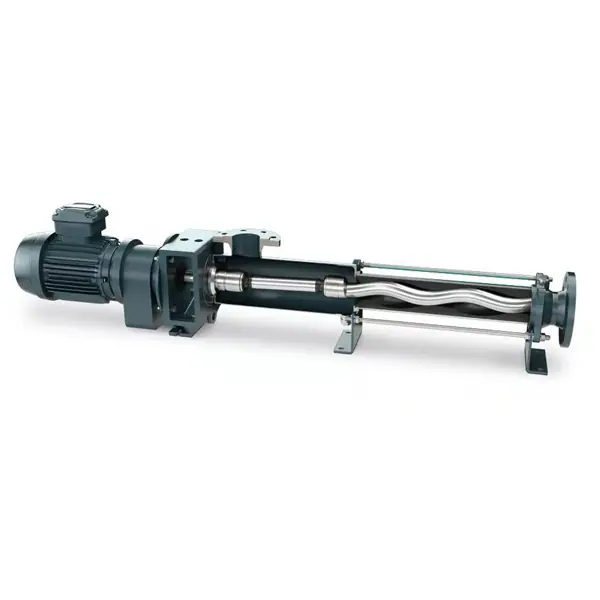How STP Plant and integrated water resources can work together?
Water is a precious resource that sustains life on our planet, and the efficient management of this resource is vital for our survival. As global water challenges continue to escalate, it is crucial to adopt holistic approaches that address multiple aspects of water management. Two key components of such an approach are sewage treatment plants and integrated water resources management.
In this blog, we will explore how sewage treatment plants and integrated water resources management can work together to tackle water challenges and promote sustainable water practices.
Sewage Treatment Plants: The Need for Effective Wastewater Treatment
Sewage treatment plants play a critical role in maintaining water quality and safeguarding public health. They are designed to remove contaminants from domestic, industrial, and agricultural wastewater before it is discharged back into the environment. The untreated sewage can be a significant source of pollution, leading to the contamination of water bodies, depletion of aquatic life, and the spread of waterborne diseases. Thus, effective wastewater treatment is crucial to mitigate these risks and ensure the availability of clean water for various purposes.
Sewage treatment plants employ various processes such as preliminary treatment, primary treatment, secondary treatment, and tertiary treatment to remove solids, organic matter, and harmful substances from wastewater. These processes help in reducing the pollution load and producing treated water that can be safely reused or released into natural water bodies without causing significant harm to the environment.
Integrated Water Resources Management (IWRM): A Holistic Approach
Integrated Water Resources Management is an approach that aims to manage water resources in a coordinated and sustainable manner. It emphasizes the interconnections between different sectors and stakeholders involved in water management, including policymakers, water suppliers, industries, agriculture, and communities. IWRM seeks to balance the social, economic, and environmental dimensions of water management to meet the present and future water needs of all stakeholders.
Key Principles of Integrated Water Resources Management:
- Integrated Planning and Decision-Making: IWRM encourages the integration of water-related decisions across different sectors and levels of governance. It promotes collaboration, information sharing, and coordination among stakeholders to develop comprehensive water management plans.
- Stakeholder Participation: IWRM recognizes the importance of involving all stakeholders in decision-making processes. This inclusiveness ensures that the diverse needs and perspectives of various groups are considered, fostering ownership and support for sustainable water management practices.
- Sustainability and Adaptability: IWRM focuses on long-term sustainability by promoting water conservation, efficiency, and the protection of ecosystems. It also emphasizes the need for adaptive management strategies to address the challenges posed by climate change, population growth, and other dynamic factors.
Integration of Sewage Treatment Plants and Integrated Water Resources Management
To achieve sustainable water management, sewage treatment plants can be integrated into the broader framework of IWRM. This integration offers several benefits:
- Water Reuse: Treated wastewater from sewage treatment plants can be utilized for non-potable purposes such as irrigation, industrial processes, and groundwater recharge. By incorporating water reuse practices, IWRM optimizes water resources, reduces demand on freshwater sources, and minimizes the discharge of treated effluent into natural water bodies.
- Nutrient Recovery: Sewage treatment plants can recover valuable nutrients, such as nitrogen and phosphorus, from wastewater. These nutrients can be used as fertilizers in agriculture, reducing the reliance on synthetic fertilizers and minimizing nutrient pollution in water bodies.
- Ecosystem Protection: Integrated water resources management recognizes the importance of protecting ecosystems and maintaining ecological balance. Properly treated effluent from sewage treatment plants can be discharged into water bodies without harming aquatic life or degrading the quality of the receiving environment.
- Public Health: By ensuring the effective treatment of sewage, integrated management practices reduce the risk of waterborne diseases and improve public health outcomes. This is particularly important in densely populated areas where proper sanitation and wastewater management are essential for preventing the spread of pathogens.
- The Orbit valve parts diagram offers a comprehensive visual representation, detailing the intricate components and their interconnections within the Orbit valve assembly, aiding in understanding its functionality and facilitating maintenance procedures.
Conclusion
The challenges associated with water scarcity, pollution, and inefficient water management require comprehensive and holistic approaches. By integrating sewage treatment plants into the framework of integrated water resources management, we can achieve sustainable water management practices that ensure the availability of clean water, protect ecosystems, and promote public health. These approaches help optimize water resources, minimize pollution, and establish a foundation for a more resilient and water-secure future. It is essential for policymakers, communities, and stakeholders to recognize the significance of such integration and work together to implement these approaches on a larger scale, fostering a more sustainable and water-conscious society.
1 1 4 ball valve
A 1 1/4 ball valve is a type of valve with a spherical closure unit. It controls flow through a quarter-turn rotational motion of a ball with a hole through its center.
